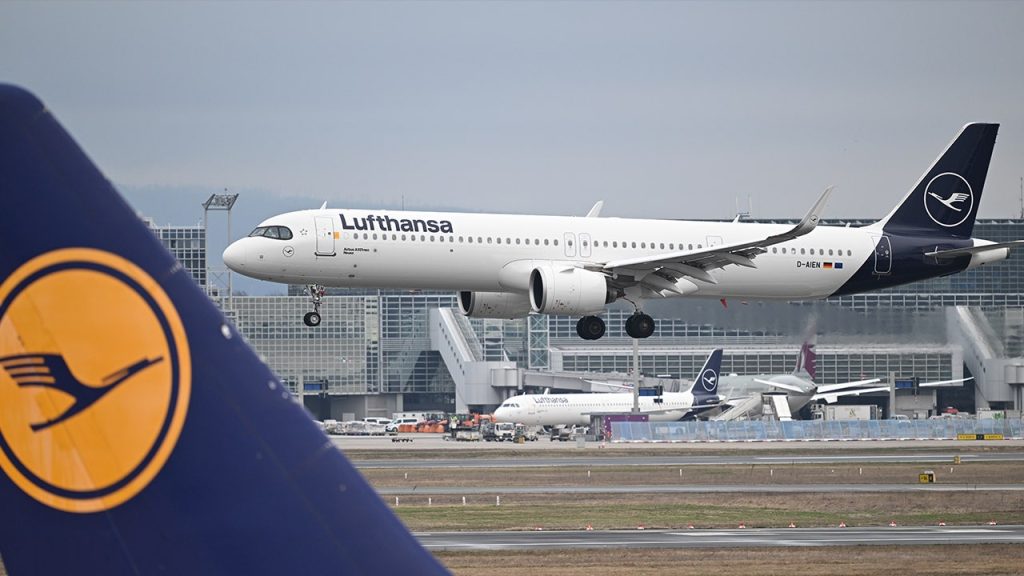A serious incident involving a Lufthansa flight last year has garnered attention following a report from the Spanish accident investigation authority CIAIAC. On February 17, 2024, an Airbus A321 was en route from Frankfurt to Seville when the co-pilot suddenly lost consciousness, leaving the flight unattended for over ten minutes. Fortunately, the aircraft was operating on autopilot, and the situation was ultimately resolved without catastrophe.
| Article Subheadings |
|---|
| 1) Overview of the Incident |
| 2) Response from Lufthansa |
| 3) Investigation Findings |
| 4) Outcome for the Crew and Passengers |
| 5) Safety Implications and Future Measures |
Overview of the Incident
On a seemingly routine flight on February 17, 2024, an Airbus A321 operated by Lufthansa was journeying from Frankfurt to Seville. The aircraft was carrying 199 passengers along with a crew of six. At approximately 10:31 UTC, the captain left the cockpit for a quick restroom break, a standard procedure for pilots. However, during this brief moment, the co-pilot suffered a sudden and severe incapacitation, collapsing without warning. The exact cause of the incapacitation remains unclear, prompting further investigations into the medical condition of the crew member.
Response from Lufthansa
Following the incident, Lufthansa airlines released a statement acknowledging the report issued by the Spanish authorities. They emphasized that they are committed to transparency and have cooperated fully with the investigation. The airline’s flight safety department has also conducted an internal review to ascertain the circumstances surrounding the incident. While they expressed their inability to comment in detail due to ongoing investigations, they assured that rigorous support measures were enacted throughout the flight operation.
Investigation Findings
The Spanish authorities highlighted critical findings during their investigation. Notably, during the co-pilot’s incapacitation, the autopilot system remained active, allowing the aircraft to continue its course despite the absence of a conscious pilot. When the captain returned to the cockpit approximately eight minutes later, he was unable to unlock the door, even after several attempts. This alarming silence prompted cabin crew to attempt to reach the cockpit via intercom, yet their calls went unanswered.
Eventually, an emergency access code was entered, enabling the door to be unlocked from the outside. Subsequent to the manual opening of the cockpit door, the captain discovered the co-pilot in distress, exhibiting symptoms such as a pale complexion and excessive sweating.
Outcome for the Crew and Passengers
Upon regaining control of the aircraft, the captain promptly initiated emergency protocols. Realizing the severity of the co-pilot’s condition, he diverted the flight to Madrid, a move that was executed with utmost precision to ensure passenger safety. The flight landed approximately twenty minutes later, and medical assistance was immediately administered upon landing. The co-pilot was swiftly transported to a nearby hospital, where he was diagnosed with an undetected neurological condition. Such a diagnosis has raised further questions regarding health screenings for pilots and the need for comprehensive assessments.
Safety Implications and Future Measures
The incident has sparked a broader conversation about airline safety protocols, particularly concerning pilot health. With the aviation industry already under scrutiny for various operational safety issues, this occurrence adds another layer to ongoing debates about pilot assessments. Experts suggest the need for more stringent health requirements and regular evaluations, particularly for those in critical roles such as cockpit personnel. As Lufthansa moves forward, the primary focus will likely be on reinforcing safety practices to prevent future incidents of a similar nature.
| No. | Key Points |
|---|---|
| 1 | Lufthansa flight experienced a co-pilot incapacitation mid-flight while on autopilot. |
| 2 | Lufthansa Airlines cooperated with the investigation and conducted an internal review. |
| 3 | Captain managed to divert the flight successfully and landed in Madrid for medical assistance. |
| 4 | Co-pilot was diagnosed with an undetected neurological condition post-incident. |
| 5 | The event has raised concerns regarding pilot health assessments and safety protocols in aviation. |
Summary
The incident involving the Lufthansa flight serves as a reminder of the inherent risks present in aviation, particularly concerning pilot health and safety measures. The proactive and responsible responses from both the airline and authorities demonstrate the critical nature of preparedness in aviation. As investigations continue and airlines review safety protocols, the hope remains that such incidents become a rare anomaly rather than a pattern.
Frequently Asked Questions
Question: What happened during the Lufthansa flight incident?
A Lufthansa Airbus A321 experienced a critical incident when the co-pilot lost consciousness while the captain was temporarily absent from the cockpit.
Question: How did the captain regain control of the aircraft?
The captain used emergency procedures to unlock the cockpit door after multiple attempts failed, and once inside, he took control of the aircraft.
Question: What health condition was discovered in the co-pilot?
The co-pilot was later diagnosed with a previously undetected neurological condition, raising concerns about pilot health screenings.


